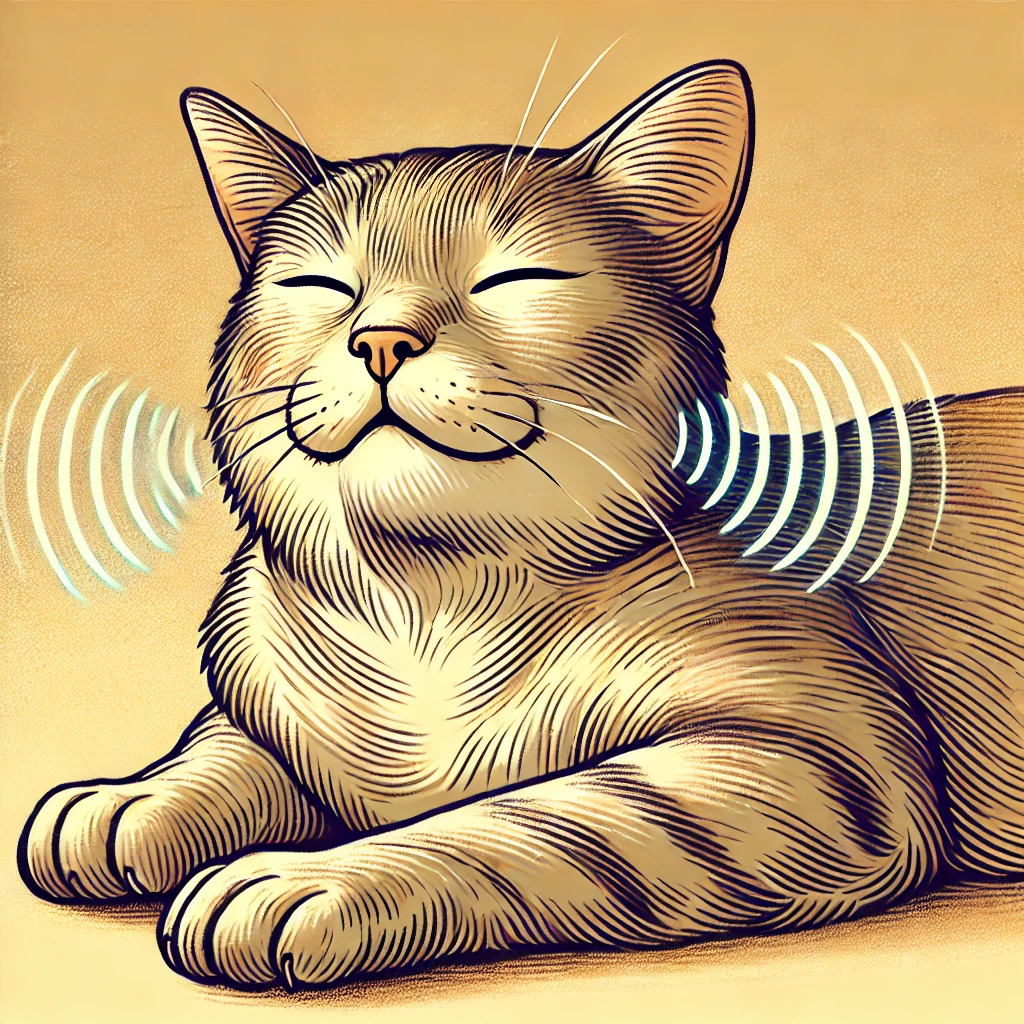Unveil the mysteries of your cat’s purr and discover it’s more than just a sign of happiness.
Introduction
Have you ever wondered why cats purr? That soothing, rhythmic sound is one of the most enchanting aspects of feline behavior. While purring is often associated with contentment and relaxation, there’s much more to this unique form of communication. Cats purr for various reasons, ranging from expressing happiness to promoting healing. By understanding the multifaceted nature of purring, you can better interpret your cat’s needs and enhance your caregiving.
Purring as a Multifaceted Form of Communication
Purring is a complex vocalization that serves multiple purposes in a cat’s life. Unlike meowing, which is primarily directed at humans, purring is used in various contexts and can convey different emotions and needs.
- Physiological Mechanism: Cats produce the purring sound through the rapid movement of the muscles in their larynx and diaphragm, causing vibrations during both inhalation and exhalation.
- Not Limited to Domestic Cats: Other feline species, such as bobcats and cheetahs, also purr, indicating its significance in the feline world.
- Versatile Communication Tool: Purring can express contentment, self-soothing, healing, and even stress.
Understanding the context in which your cat purrs is key to interpreting what they’re trying to communicate.
Purring for Contentment and Relaxation
The Sound of Happiness
One of the most common reasons cats purr is to express contentment and relaxation.
- Comfort and Safety: When your cat curls up on your lap, purring softly, it’s a sign they feel safe and comfortable with you.
- Bonding: Purring during petting sessions strengthens the bond between you and your cat, releasing endorphins that promote feelings of well-being.
- Positive Reinforcement: Responding to your cat’s purrs with affection reinforces their behavior, encouraging them to seek out more interaction.
Indicators of a Happy Purr
- Body Language: Relaxed posture, half-closed eyes, and slow blinking often accompany contented purring.
- Volume and Tone: A soft, steady purr usually signifies relaxation.
Enjoy these moments as they are expressions of your cat’s trust and happiness.
Purring as a Self-Healing Mechanism
The Healing Power of Purrs
Interestingly, purring isn’t just beneficial for emotional well-being; it also has physical healing properties.
- Vibrational Frequencies: Cats purr at frequencies between 25 and 150 Hertz, which have been shown to promote tissue regeneration and bone healing.
- Pain Relief: Purring can act as a natural analgesic, helping cats cope with discomfort or pain.
- Stress Reduction: The vibrations can lower stress levels, aiding in overall health.
Scientific Insights
- Bone Density Maintenance: The frequencies of purring may stimulate bone growth and repair.
- Muscle Recovery: Purring vibrations can help heal tendons and muscles, keeping cats agile.
This self-healing mechanism is a fascinating aspect of why cats purr, showcasing their ability to care for themselves.
How Cats Purr When Stressed or Anxious
Purring Isn’t Always a Sign of Happiness
Contrary to popular belief, cats may also purr when they’re stressed, anxious, or even in pain.
- Coping Mechanism: Purring can be a way for cats to soothe themselves in stressful situations, similar to how humans might hum or sing to calm down.
- During Illness or Injury: Cats have been observed purring when injured or sick, potentially to promote healing.
- Veterinary Visits: Many cats purr at the vet’s office, not because they’re happy, but as a self-comforting behavior.
Recognizing Stress-Related Purring
- Body Language: Tense muscles, dilated pupils, and flattened ears may accompany stress-induced purring.
- Contextual Clues: Consider the environment—new surroundings, loud noises, or unfamiliar people can trigger anxiety.
Being aware that purring can indicate stress helps you provide the necessary comfort or seek veterinary assistance.
Mother-Kitten Communication Through Purring
The First Language
Purring plays a crucial role in the early life of kittens.
- Bonding: Mother cats purr to communicate with their newborn kittens, who are born deaf and blind but can feel vibrations.
- Guidance: The vibrations help kittens locate their mother for nursing and warmth.
- Safety Signal: Purring between mother and kittens conveys a sense of security.
Kitten Development
- Early Purring: Kittens start purring when they are just a few days old, signaling their well-being to the mother.
- Social Learning: This early communication lays the foundation for social behaviors and bonding.
Understanding this aspect of purring highlights its importance in feline development and social structures.
Contextual Clues to Interpret Purring
Combining Signals for Accurate Interpretation
To accurately understand why your cat is purring, consider additional cues.
Body Language
- Relaxed Posture: Indicates contentment.
- Tense Stance: May suggest stress or pain.
Environmental Factors
- Routine Changes: New pets, moving homes, or changes in schedule can affect your cat’s emotional state.
- Feeding Times: Anticipation of food may cause excited purring.
Vocalizations
- Meowing and Purring Together: Could indicate a request or need for attention.
- Growling with Purring: Rare but may signal conflicting emotions or discomfort.
Practical Tips
- Observe Patterns: Take note of when and where your cat purrs to understand their triggers.
- Consult a Vet: If you suspect your cat is purring due to pain or stress, seek professional advice.
- Provide Comfort: Create a safe and comfortable environment to reduce stress-induced purring.
By paying attention to these contextual clues, you can respond appropriately to your cat’s needs.
Conclusion
Purring is a multifaceted form of communication that goes beyond mere contentment. By understanding the various reasons why cats purr, you can enhance your caregiving and strengthen the bond with your feline friend. Whether they’re expressing happiness, self-healing, coping with stress, or communicating with their kittens, purring is an integral part of a cat’s life. Being attuned to your cat’s purring and the context in which it occurs enables you to provide better support and enjoy a deeper connection.






